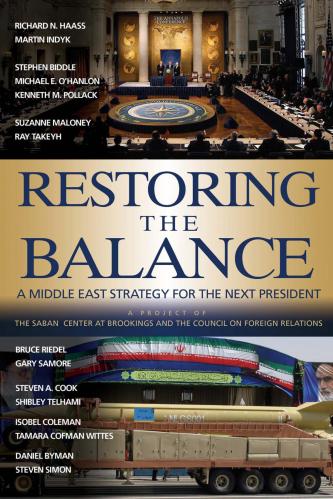I had assumed that Mr. Trump’s assertion on the campaign trail that the United States should have taken and kept Iraq’s oil was nothing but electioneering. The fact that he has repeated it as president suggests that he may actually believe it’s a good idea.
Just for the sake of argument, let’s set aside the fact that doing so would be illegal, immoral, and strategically disastrous. There’s actually a simpler reason to forget this idea: it would be a terrible financial move.
Until science fiction movies become reality, the United States has no ability to somehow “take” all of Iraq’s oil (143 billion barrels, according to the U.S. Energy Information Agency) and move it to the United States in one fell swoop. We can’t suck it up and fly it back to New Jersey. So in reality, “taking” Iraqi oil means occupying Iraq, pumping its oil the way that the Iraqis have, selling it on the international market, and keeping the revenues for ourselves.
There’s actually a simpler reason to forget this idea: it would be a terrible financial move.
To repeat: pumping Iraq’s oil for ourselves means militarily occupying Iraq. Most of Iraq’s oil is located in southern and northern Iraq so we would not have to occupy the entire country (which would require a commitment of about 500,000 troops). Nevertheless, just occupying the oil-producing regions of Kurdistan and southern Iraq (effectively the provinces of Diyala, Wasit, Maysan, Muthanna, Basra, and probably Salah ad-Din) would require an occupation force of roughly 150,000 to 200,000 troops. In other words, it would require the occupation of Iraq at levels roughly equivalent to the occupation forces the U.S. employed from 2003 to 2008.
That’s convenient because we also have a rough sense of what that occupation cost us. In direct costs, the eight years of U.S. occupation from 2003 to 2011 cost the United States $815 billion, or roughly $100 billion per year. However, indirect costs (like interest on the debt we incurred to pay for the war and future outlays for wounded soldiers and survivors of those killed in action) will add quite a bit more. No one knows for sure, because it depends on lots of things that will happen in the future, but estimates by various economists indicate that the indirect costs will bring the total cost of those eight years of occupation to anywhere from $1.7 to $3 trillion dollars—or $212 to $375 billion dollars per year of the occupation.
So that’s what we are looking at in terms of cost: anywhere from $100 to $375 billion per year, but around $212 billion is probably the right number.
Now we have to turn to the benefits side of the equation. What would we get from that occupation? Well, Iraq has been pumping oil as fast as it can, with the aid of Western oil giants like Shell, Exxon, and BP. They have consistently exceeded expectations of how much they can grow production each year, and are now producing 4.8 million barrels per day—far more than they did under Saddam. So it seems unlikely that the United States could have done much better if we had seized the oilfields and pumped the oil ourselves—or if we were to do so in the near future.
What has that oil netted Iraq? Well, according to the EIA, Iraq made $57.2 billion in revenue from its oil exports in 2015 and $89.2 billion from its oil exports in 2014. (Figures for 2016 are not yet available).
Now, Iraq does not export every barrel it pumps—its own people need to consume some. If the United States were utterly ruthless (and given the assumptions of this policy, it sounds like that is the plan) we could deprive the Iraqis of all domestic consumption and sell every last barrel. Even if we did that, however, since Iraq only consumes about 10 to 14 percent of the oil it produces, it doesn’t improve the numbers much. For instance, adding back domestic production to the 2014 and 2015 numbers only boosts oil revenue to about $65 billion for 2015 and about $102 billion for 2014.
Some might argue that the 2003 to 2011 occupation of Iraq was unnecessarily expensive; that costs could have been much lower if it had not been so horribly mismanaged from 2003 to 2006. I would certainly agree with that, but I still don’t believe that this argument should then be used to discount the likely cost of a new occupation of Iraq. The last time around, most Iraqis marveled at our incompetence and were horrified by the miseries we inflicted on them, but they were generally glad to be rid of Saddam and believed that we (probably) had their best intentions at heart. Under President Trump’s new plan, we would be going into Iraq to occupy much of the country to steal their oil—their patrimony. I think it highly likely that under such circumstances, Iraqi resistance to American occupation would make the 2003-2006 insurgency pale by comparison and so, if anything, costs could be even higher.
So that is the bottom line. Trying to take Iraq’s oil by occupying the country and pumping the oil makes no financial sense whatsoever.
In an absolute best-case scenario, where the costs of occupation are minimal and the revenues produced from Iraqi oil exports are maximized, we might break even. In any other, more realistic scenario, the United States loses money. A lot of money. In fact, in the most likely scenarios, we get positively fleeced, potentially losing over $300 billion per year over the long term. And the longer we stay and the more of Iraq’s oil we forcibly export for ourselves, the more ruinously expensive it gets.
So can we drop this nonsense and talk about a more realistic Iraq policy? My suggestion emphasizes the need for Washington to make a major effort to help Iraq politically and stop focusing so myopically on ISIS alone. You can read it in full here, along with other big ideas that my Brookings colleagues have for America’s new phase.
The Brookings Institution is committed to quality, independence, and impact.
We are supported by a diverse array of funders. In line with our values and policies, each Brookings publication represents the sole views of its author(s).









Commentary
Want to “take the oil”? Crunch the numbers first
January 25, 2017